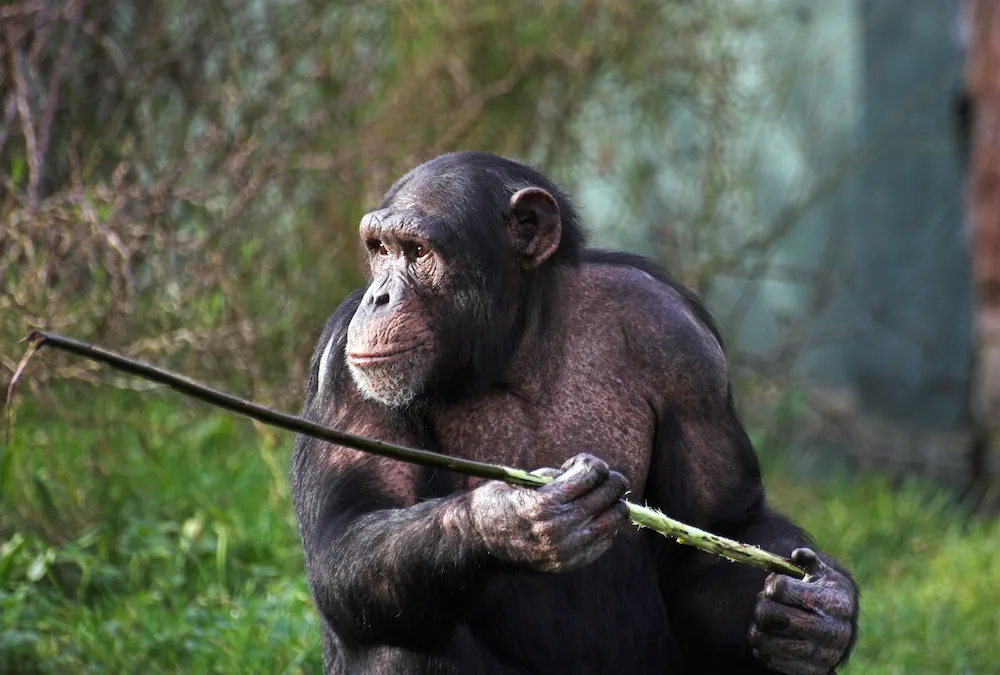During the Stone age, our prehistoric ancestors started making simple tools out of stone to hunt, prepare food, make clothes, and build homes. Over millions of years, humans have mastered tool making, but we’re far from the only animals to use tools. Many members of the animal kingdom have brilliantly harnessed tools to help them catch prey, build shelters, keep clean, and even attract mates. And we’re still discovering new animal tools every day. Here are some of the most surprising and ingenious ways that animals use tools.
Chimpanzees Make Spears to Hunt

It shouldn’t be surprising that our closest relative, the chimpanzee, is also highly skilled at making and using tools. In fact, we could make an entire list just from tools that chimps have perfected. The apes use stones as hammers to crack open nuts and sharp rocks to cut large fruit. They tear the leaves and small twigs of branches to break into ant and termite nests. These sticks are then used to extract bugs from the mound. The chimp’s ability to sharpen sticks into spears by breaking and chewing one end may be its most striking example of tool use. The spears are then used for hunting small animals, like bush babies. Chimps are the only non-human animals that are known to make and use spears for hunting.
